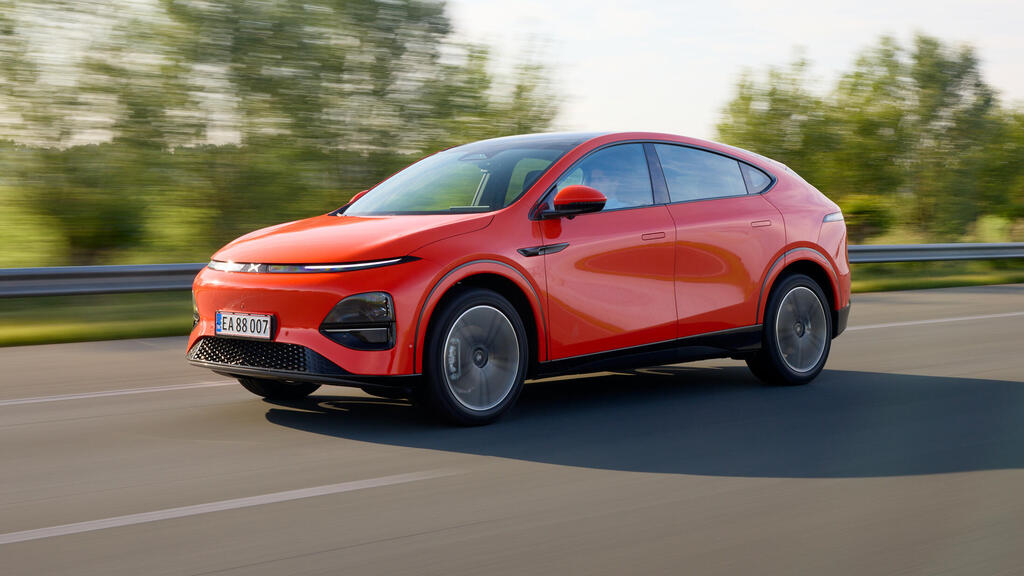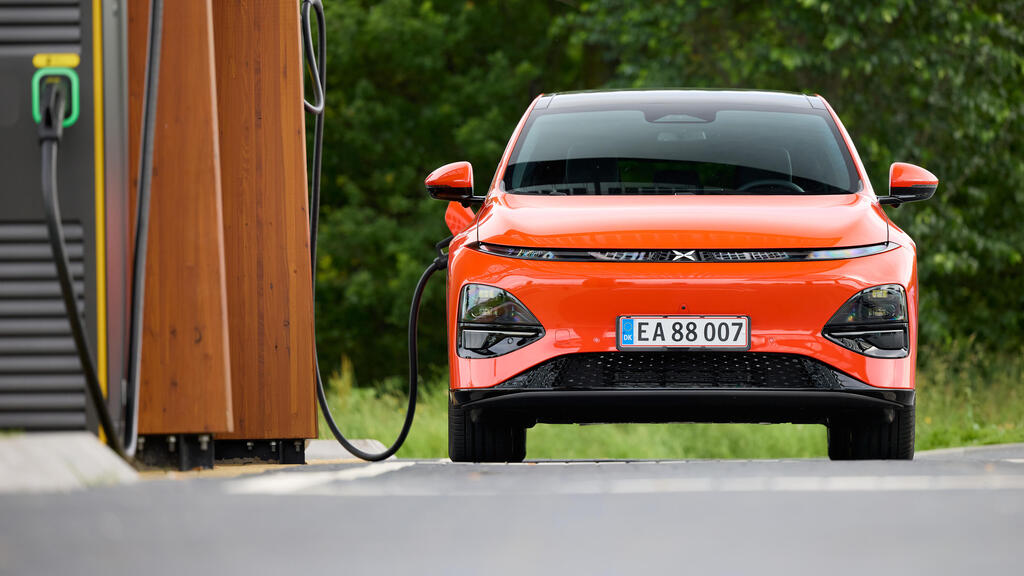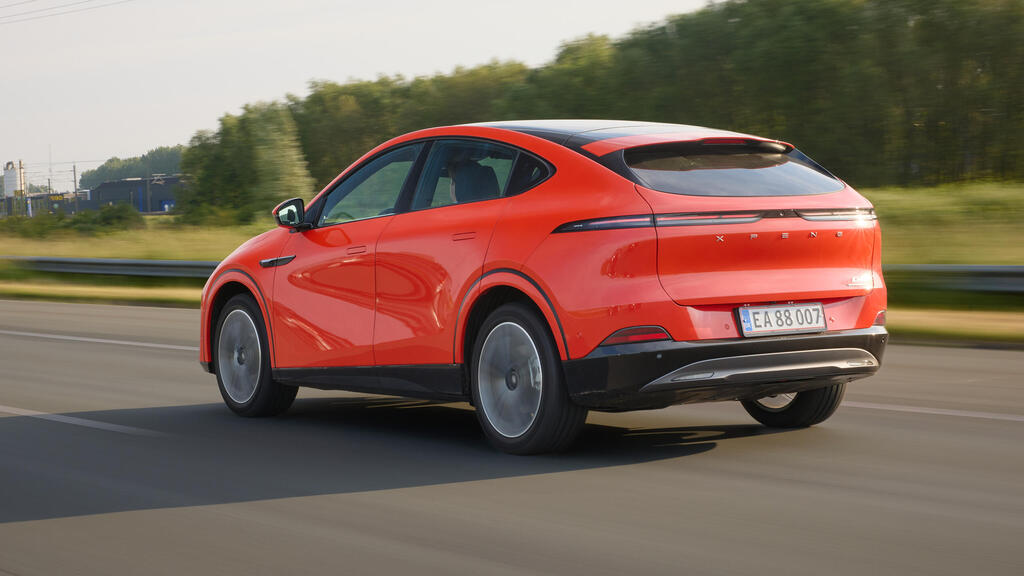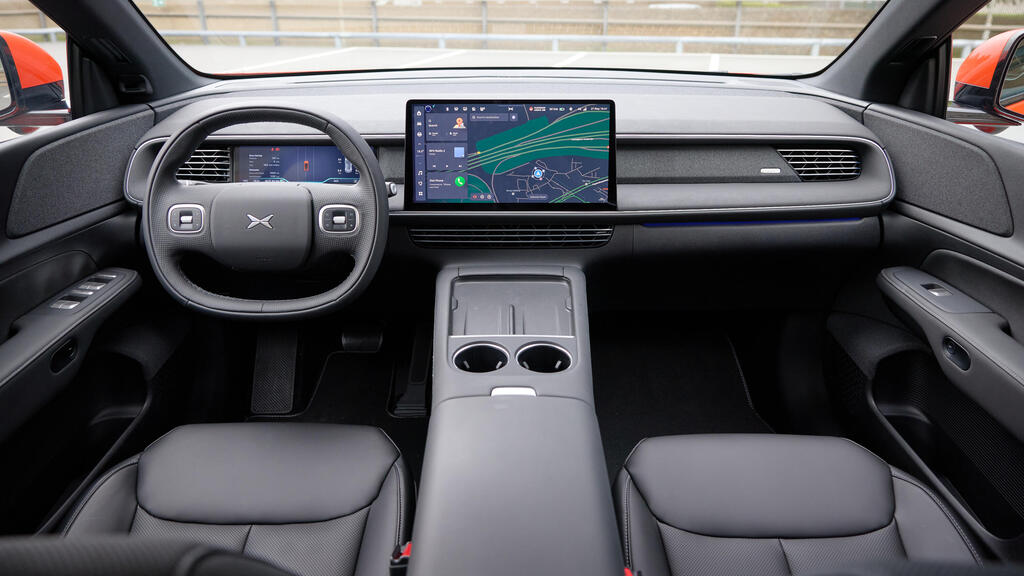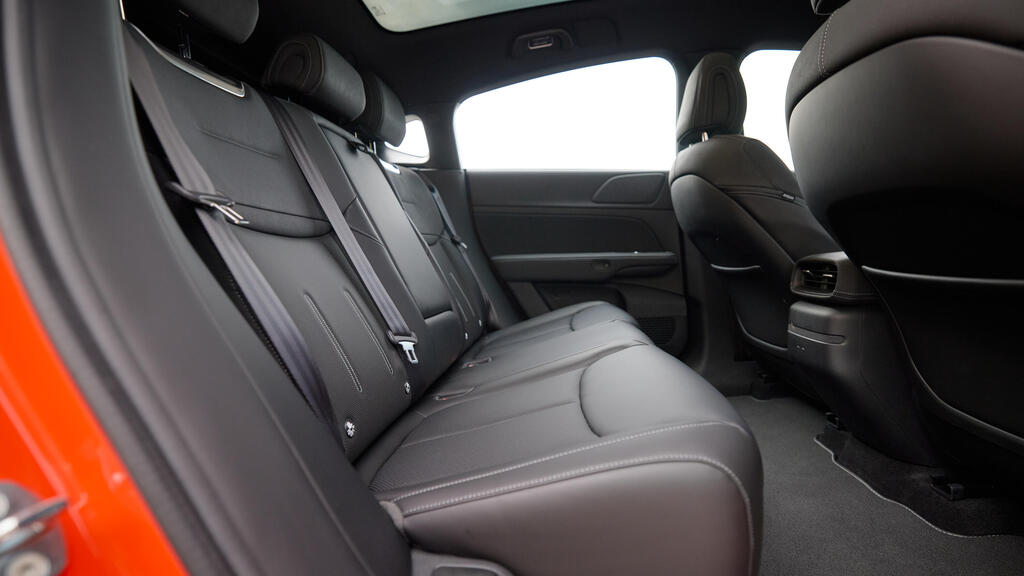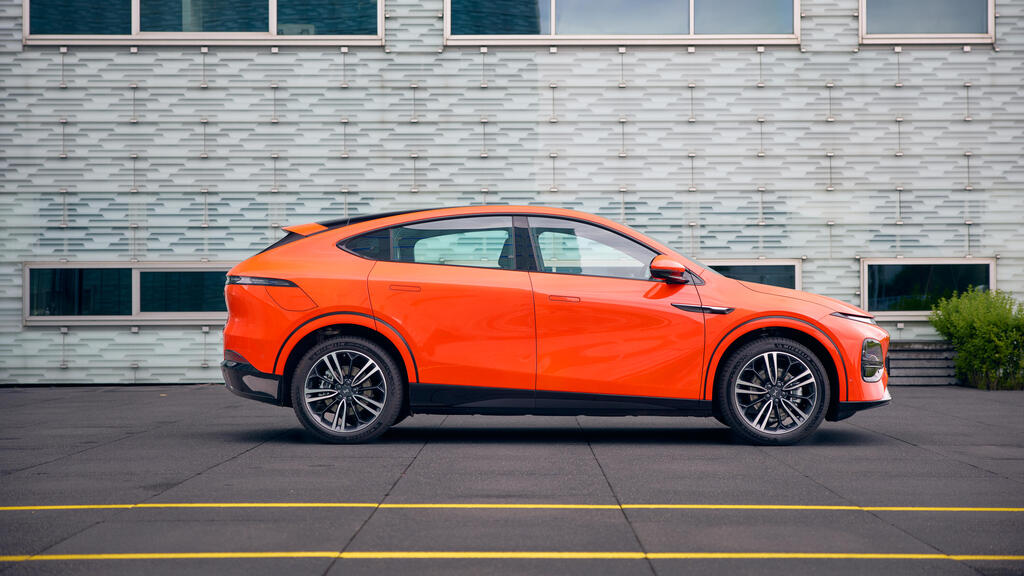Getting your Trinity Audio player ready...
Xpeng arrived in Israel just over six months ago, another brand in the wave of Chinese car companies that have swept the market in the past two years. Surprisingly, despite offering only two models at a non-budget-friendly price, it quickly succeeded, putting close to 1,500 cars on the road at an average price of around 280,000 shekels.
In a few weeks, a third model will hit the local roads. Unlike its two siblings—the P7 and G9—this one is aimed squarely at the heart of the large family car category, likely the most challenging, crowded, and competitive segment of electric vehicles. This category includes excellent models like the Hyundai Ioniq 5, Volkswagen ID.5, and the Tesla Model Y, the world's best-selling car in 2023.
Design and Interior: Continuing the solid, almost restrained design line of the first two models, the G6 doesn't dazzle at first glance. However, it is very attractive, with a contemporary silhouette, narrow front and rear lighting units, a sealed front grille, and retractable door handles. It features a modern coupe-like design and a relatively low drag coefficient (0.25), though not record-breaking. The interior is familiar from the manufacturer, featuring a large touchscreen (15 inches), a narrow digital instrument panel (10.2 inches), and an almost complete absence of physical buttons. The operating system, powered by Qualcomm’s new Snapdragon 8155 chipset, functions well with quick responses, extensive voice control, and the ability to run a wide range of apps—from Spotify to Netflix and Disney Plus.
What about the much-needed integration with Android Auto and Apple CarPlay, promised to Israeli buyers but delayed for many frustrating months? This feature was also missing in the test vehicles, but there is a promise it will arrive with the first cars to be sold here, starting in August.
The ergonomics are also unconvincing and flawed in many cases, appearing as an unnecessary attempt to mimic Tesla in areas where it fails. For example, adjusting air vents and side mirrors solely from the screen, controlling some seat adjustments from the screen, and lacking a glove compartment and internal cover for the large sunroof, which has the potential to roast passengers’ heads in a hot Israeli summer. The material quality is very good, and the assembly appears successful. The driver’s seat is comfortable, with a wide range of adjustment options, good front and side visibility, but limited rear visibility due to a small rear window.
Dimensions: Identical to the Tesla Model Y, the G6 measures 475 cm in length, 192 cm in width, and has a wheelbase of 289 cm, with an additional 2.5 cm in height (165 cm). Accordingly, the rear seat space is very generous, with a flat floor and plenty of legroom and headroom, even for tall passengers. The rear seatback adjusts to a comfortable semi-reclining position for long trips. The trunk has a generous volume (571 liters), but unlike American and Korean competitors, there is no additional front trunk.
Features: The single version to be marketed here includes dual wireless charging pads with built-in cooling, an 18-speaker audio system, leather-like seats with electric adjustment, front ventilation, front and rear heating, an electric tailgate, excellent automatic parking, V2L support for powering external devices, and OTA updates.
The safety system includes five radars, 12 ultrasonic sensors, and an equal number of cameras, providing capabilities such as autonomous braking, adaptive cruise control, lane-keeping (which performed poorly even on well-marked roads) with automatic lane change, active blind spot warning preventing lane entry, door opening alert, and driver monitoring via a facial scanning camera.
Engine and Performance: The G6 offers a choice of three powertrains, similar to the Tesla competitor (and with identical names). The Standard Range has a single rear motor (259 hp) and an LFP battery with a capacity of 66 kWh, promising a declared range of 435 km. The Long Range features a stronger rear motor (286 hp), an NCM battery with a capacity of 87.5 kWh, and a declared range of 570 km, while the Performance has dual motors with 477 hp, the larger battery, and a declared range of 550 km.
We will wait for a local test to check the real-world range, but we were impressed with the good performance in the two versions we drove. The Long Range accelerates to 100 km/h in 6.7 seconds and offers enough power for relaxed daily driving, including more spirited driving and quick overtakes. The Performance cuts acceleration to 4.1 seconds, a figure that can induce nausea in anyone attempting to verify it multiple times. Regenerative braking is available in four intensity levels, with the strongest enabling (almost) one-pedal driving. However, the choice between levels is made from the touchscreen. We have said it every time we encountered this and will remind you again now: this option makes operation less accessible, less safe, less convenient, and less smart compared to steering wheel paddles.
A high operating voltage (800 volts), similar to competitors from Kia (EV6) and Hyundai, allows ultra-fast charging (215 kW for the small battery, 280 for the large one) and filling from 10% to 80% in about 20 minutes at a dedicated station, an impressive figure similar to Korean competitors and shorter than American and German ones.
Comfort and Handling: The G6 is based on a dedicated electric platform developed by Xpeng, with double-wishbone front suspension and multi-link rear suspension. On the quality roads of the Netherlands where we drove, ride comfort was very good. However, the choice of 20-inch wheels with low-profile tires (255/45) seems unnecessary to us (especially in the base versions) and affects damping ability at low speeds, presenting a challenge on less maintained Israeli roads. Noise insulation is excellent.
The roads we drove on—like most roads in this European country—did not allow for an in-depth examination of dynamic capabilities. However, the first impression reveals safe and predictable behavior, with a natural feel from the steering and brakes.
Summary: Unlike most Chinese manufacturers, Xpeng in general, and the G6 in particular, do not aim for a cheap price tag lower than Western competitors but compete directly with them. Therefore, the price tag is expected to start at around 220,000 shekels for the base version and climb to 300,000 shekels for the top Performance version, roughly the price range of the mentioned and very successful competitors.
From the initial impression, it seems Xpeng has all the reasons to do so, despite the brand lacking the reputation enjoyed by direct competitors. It looks good, offers high capability in almost every possible area, and at least from the initial impression, it sparks curiosity about its ability to compete for the top spot in the category against the best of the best.
It is not without problems, and brand representatives would be wise to quickly abandon excessive attempts to mimic Tesla. If that happens, the G6 could become not only one of the best Chinese models on the market but also a contender for the top spot. That’s how promising it is.


